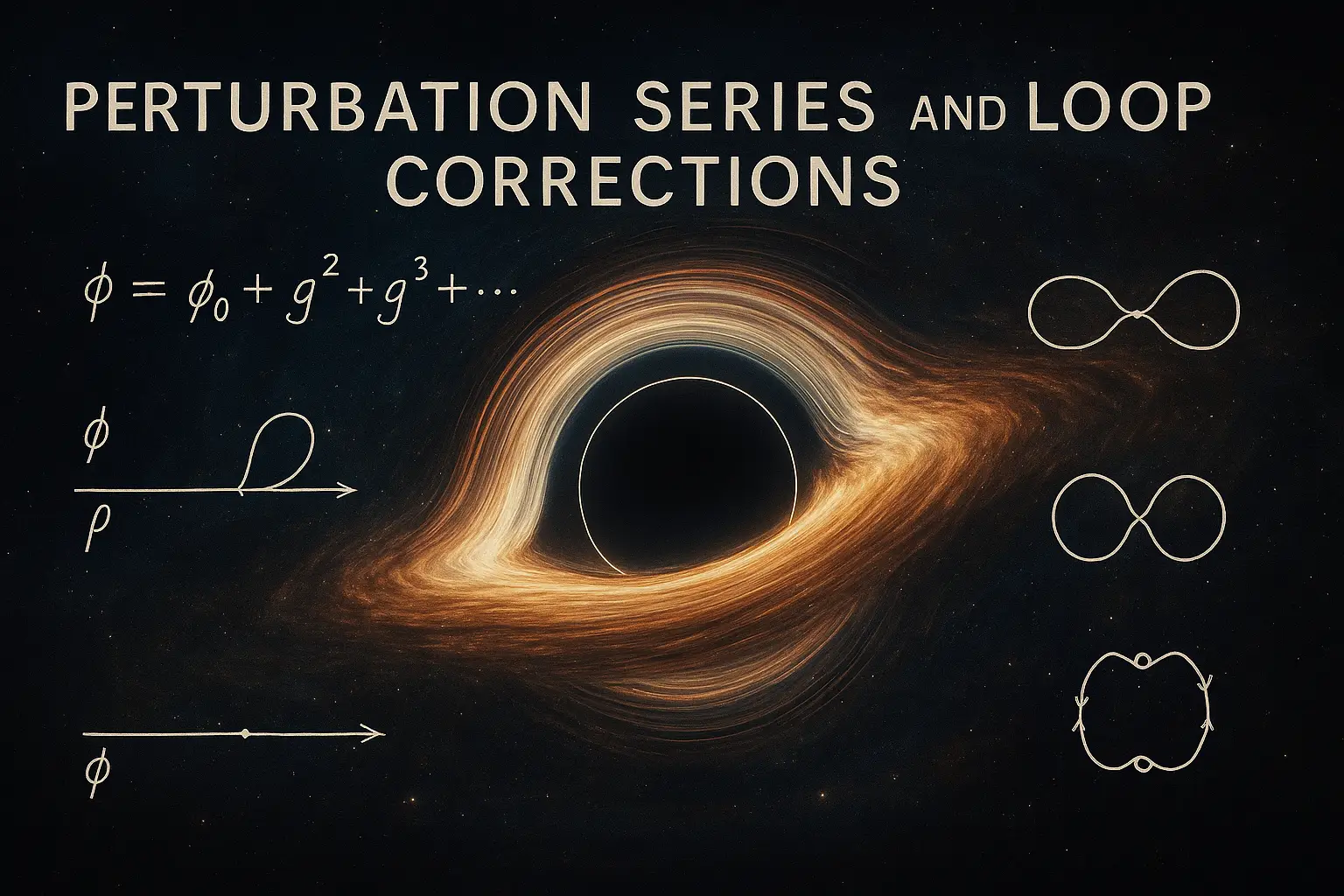Table of Contents
- Introduction
- Motivation and Scope of Perturbation Theory
- Basics of Perturbative Expansion
- Role in Quantum Field Theory
- Feynman Diagrams and Expansion in Coupling Constant
- Orders in Perturbation Theory
- Tree-Level vs Loop-Level Diagrams
- One-Loop Corrections
- Divergences in Loop Integrals
- Regularization Techniques
- Renormalization Procedure
- Running Coupling Constants
- Renormalization Group Equations
- Multi-Loop Diagrams and Higher-Order Corrections
- Mass Renormalization
- Charge Renormalization
- Wavefunction Renormalization
- Physical Predictions from Loop Corrections
- Limitations of Perturbative Approach
- Beyond Perturbation: Non-Perturbative Techniques
- Conclusion
1. Introduction
Perturbation theory is a cornerstone of quantum field theory (QFT), enabling systematic computation of physical quantities by expanding in a small parameter—the coupling constant. Loop corrections, corresponding to internal cycles in Feynman diagrams, represent quantum fluctuations and refine tree-level predictions.
2. Motivation and Scope of Perturbation Theory
Exact solutions in interacting quantum theories are rare. Perturbative methods allow us to compute approximate solutions order-by-order in the coupling constant, especially when it is small (e.g., \( \alpha \approx 1/137 \) in QED).
3. Basics of Perturbative Expansion
In quantum mechanics, consider a Hamiltonian:
\[
H = H_0 + \lambda H’
\]
The energy levels and states are expanded in powers of \( \lambda \):
\[
E = E^{(0)} + \lambda E^{(1)} + \lambda^2 E^{(2)} + \cdots
\]
In QFT, this logic extends to scattering amplitudes and Green’s functions.
4. Role in Quantum Field Theory
Perturbation theory is used to:
- Calculate scattering amplitudes
- Predict cross sections and decay rates
- Understand quantum corrections and running couplings
5. Feynman Diagrams and Expansion in Coupling Constant
Feynman diagrams organize terms in perturbation theory. Each vertex introduces a factor of the coupling constant (e.g., \( e \) in QED), so diagrams with more vertices represent higher-order corrections.
6. Orders in Perturbation Theory
- Tree-level: leading-order diagrams, no loops.
- 1-loop: first quantum correction.
- 2-loop, 3-loop, etc.: increasingly accurate but complex.
7. Tree-Level vs Loop-Level Diagrams
- Tree diagrams capture classical-like interactions.
- Loop diagrams capture quantum effects such as:
- Vacuum polarization
- Self-energy
- Vertex corrections
8. One-Loop Corrections
One-loop diagrams include:
- Electron self-energy
- Photon vacuum polarization
- Vertex correction (e.g., in QED: the triangle diagram)
They are essential for accurate predictions.
9. Divergences in Loop Integrals
Loop integrals often diverge:
\[
\int \frac{d^4k}{(2\pi)^4} \frac{1}{(k^2 – m^2)^2}
\rightarrow \infty
\]
These ultraviolet divergences reflect sensitivity to high-energy physics.
10. Regularization Techniques
Used to tame divergences:
- Cutoff regularization: impose a momentum cutoff \( \Lambda \)
- Dimensional regularization: evaluate in \( d = 4 – \epsilon \) dimensions
- Pauli-Villars: introduce fictitious particles
11. Renormalization Procedure
Divergences are absorbed into redefinitions of:
- Mass
- Charge
- Field normalization
This makes physical quantities finite and measurable.
12. Running Coupling Constants
Quantum corrections cause coupling constants to vary with energy:
\[
\alpha(q^2) = \alpha(0) \left[1 + \frac{\alpha(0)}{3\pi} \log\left( \frac{q^2}{m^2} \right) \right]
\]
This is crucial for unification and predictions at different scales.
13. Renormalization Group Equations
Describes how parameters evolve with scale:
\[
\mu \frac{d g(\mu)}{d\mu} = \beta(g)
\]
The beta function \( \beta(g) \) determines the flow of the coupling.
14. Multi-Loop Diagrams and Higher-Order Corrections
Higher-loop diagrams:
- Improve precision
- Require advanced techniques (symbolic integration, asymptotic expansions)
- Are essential for matching experimental accuracy in QED and beyond
15. Mass Renormalization
Physical mass differs from the bare mass:
\[
m_{\text{phys}} = m_0 + \delta m
\]
Loop corrections to propagators shift the pole of the Green’s function.
16. Charge Renormalization
Observed charge is screened due to vacuum polarization. Loop corrections modify the effective strength of interactions.
17. Wavefunction Renormalization
The residue at the pole of the propagator is altered:
\[
Z = 1 + \delta Z
\]
Field redefinitions ensure consistent normalization.
18. Physical Predictions from Loop Corrections
Examples include:
- Lamb shift in hydrogen
- Anomalous magnetic moment of the electron:
\[
a_e = \frac{\alpha}{2\pi} + \cdots
\] - Running of \(\alpha\) and other couplings in QCD and electroweak theory
19. Limitations of Perturbative Approach
- Breaks down at strong coupling
- Convergence is often asymptotic
- Cannot handle non-perturbative effects like confinement
20. Beyond Perturbation: Non-Perturbative Techniques
Alternatives include:
- Lattice gauge theory
- Instantons and solitons
- AdS/CFT duality
- Resummation and effective theories
21. Conclusion
Perturbation theory and loop corrections form the backbone of modern quantum field theory calculations. They allow precise predictions of physical observables and deepen our understanding of quantum interactions. Though limited in scope, perturbative methods are indispensable for building and testing the Standard Model and exploring its extensions.


